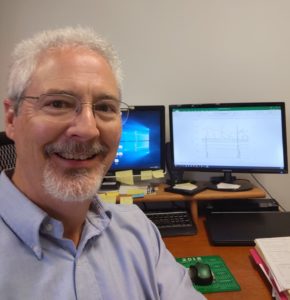John R. Buchanan, Ph.D., P.E.
 Dr. John R. Buchanan is a Professor at the University of Tennessee and is on the faculty of the Biosystems Engineering and Soil Science Department. He has 34 years of teaching, research, and outreach experience in the areas of onsite and decentralized wastewater management, water supply, water quality, and storm water engineering. Dr. Buchanan has B.S. and M.S. degrees in Agricultural Engineering and a Ph.D. in Civil Engineering, all from The University of Tennessee. John is a member of NOWRA, and the American Society of Agricultural and Biological Engineers. He currently serves as the undergraduate director of the Construction Science and Management Program housed within the Biosystems Engineering and Soil Science Department. John is a registered professional engineer in Tennessee.
Dr. John R. Buchanan is a Professor at the University of Tennessee and is on the faculty of the Biosystems Engineering and Soil Science Department. He has 34 years of teaching, research, and outreach experience in the areas of onsite and decentralized wastewater management, water supply, water quality, and storm water engineering. Dr. Buchanan has B.S. and M.S. degrees in Agricultural Engineering and a Ph.D. in Civil Engineering, all from The University of Tennessee. John is a member of NOWRA, and the American Society of Agricultural and Biological Engineers. He currently serves as the undergraduate director of the Construction Science and Management Program housed within the Biosystems Engineering and Soil Science Department. John is a registered professional engineer in Tennessee.
Dr. Buchanan will be presenting the following sessions:
Aerobic Treatment: Creating a Happy Home for the Microbes that Renovate Wastewater
Abstact: In order to convert wastewater back to water, we must remove the wastes. Bacteria and other microorganisms assist with this process by oxidizing organic carbon, solubilizing many of the suspended solids, and by transforming nitrogen compounds. Aerobic treatment systems optimize this natural process by providing plenty of dissolved oxygen, warmth, and the removal of accumulated biosolids. This presentation will focus on how aerobic treatment systems work (on a microbial level), and how they should be maintained so that the bacterial will continue to perform as expected.
Electrical Best Management Practices for Onsite Wastewater Treatment
Whether using a pump to pressurize the distribution system or a blower to assist with aerobic treatment, many onsite wastewater treatment systems have components that require electricity. The combination of moisture, corrosive atmosphere, and sensitive electronics creates a condition that requires the installer to use proven practices when connecting electrical components. This presentation will focus on how to prevent sewer gases from entering the control panel, how to create strong wire splices, how to use latching relays to operate the pump, and how to select cables for use in the septic environment.
Subsurface Drip Dispersal System Design
Subsurface drip dispersal is a means of providing uniform effluent distribution across the soil treatment area. Using drip irrigation technology, effluent is dispersed into the soil using emitters, which are typically placed on 24-inch centers. Because of the distribution uniformity, drip is becoming a popular solution for sites with shallow soils. This presentation will focus on the hydraulics of drip dispersal, with a special emphasis on determining the pressure requirements throughout the system, pump selection based on flow and pressure requirements, and determining pipe diameters that minimize both fluid friction and
